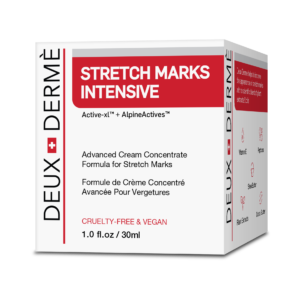Stretch marks are a form of visible scarring of the skin that occurs when skin is stretched rapidly over a short period of time. While some people report a burning or itching sensation prior to stretch marks appearing, in many cases no symptoms are noticed prior to the development of stretch marks.
Since stretch marks do not have signs and symptoms that could be recognized, it’s better to understand if you’re among the types of people who are at high risk for developing stretch marks in order to take steps to try and prevent their development. Stretch marks commonly develop on the following individuals:
Pregnant Women
Because the body grows so rapidly in order to support a growing baby, pregnant women are at high risk for developing stretch marks. It’s common for stretch marks to develop on expecting mothers in their second and third months of pregnancy. Stretch marks most commonly appear on a pregnant woman’s abdomen and/or breasts due to the rapid growth experienced in those areas.
Adolescents
While some children grow at a slow, sustained pace, others experience tremendous growth spurts. When an adolescent child goes through an extreme growth spurt, stretch marks can sometimes appear on his/her body as a result of stretching of the skin. Adolescent girls may also develop stretch marks on their breasts due to the sometimes rapid growth in that area during puberty.
Body Builders
Body builders commonly develop stretch marks on places like arms, thighs, and buttocks when muscles grow rapidly in those areas. Body builders who use aids such as steroids or human growth hormone are at an even greater risk for developing stretch marks because of the rapidity with which muscles can grow while using these supplements.
People Experiencing Rapid Weight Gain or Loss
Individuals who gain or lose weight very rapidly are very likely to develop stretch marks. Stretch marks due to weight gain can appear anywhere on the body, but they commonly appear on the upper arms, underarms, abdomen, back, and hips. Stretch marks due to weight loss are typically the result of losing weight rapidly, so individuals on drastic diets or who have undergone surgical procedures to lose weight are at a much higher risk for stretch mark development than individuals who lose weight at a sustained pace over time.
How to Avoid Getting Stretch Marks
If you’re in a high risk category for stretch marks, there are things you can do to help prevent their development. Exercising regularly can help slow the pace at which your skin stretches, lessening the chance that stretch marks will appear. Avoiding steroids and other supplements that encourage muscles to develop rapidly will also help discourage stretch marks.
There are also many products available that can help strengthen skin and prevent stretch mark development. Lotions and creams can be applied to the areas of your body that are at risk for stretch marks that will make your skin more pliable, discouraging the stretching that causes stretch mark scarring. Check out our catalog of stretch mark prevention products to find one that will work best for you.


